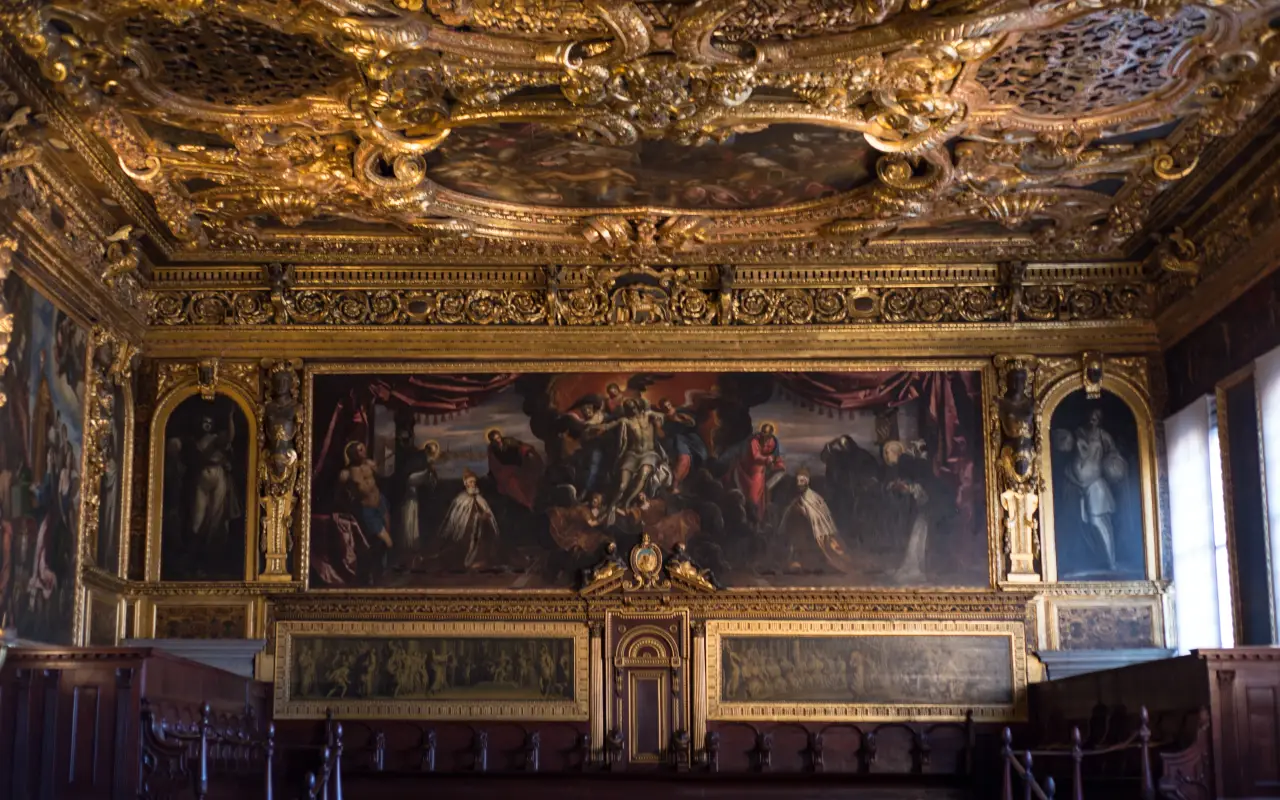Claim to Fame
The Doge’s Palace was the political heart of the Venetian Republic for over 700 years and remains a masterpiece of Gothic civil architecture.
📌 Navigating Doge's Palace : Answers to Frequently Asked Questions
- Washrooms: Accessible washroom facilities are available within the palace.
- Hours of Operation: Opening hours vary, typically from morning to early evening. It's advisable to check the current schedule before visiting.
- Important Information: Doge's Palace, a symbol of Venice's rich history and power, offers visitors a glimpse into the city's past with its grand architecture, art collections, and the iconic Bridge of Sighs.
- Admission Fee: Admission fees are required for entry, with various ticket options available, including combined tickets with other nearby attractions.
- How Long to Visit: A visit can last 1-3 hours, depending on interest in the extensive art collections, architecture, and history offered.
- Parking: Parking is not available directly at Doge's Palace due to its location in Venice. Visitors typically use public transport or park at designated areas on the mainland or the island's edges.
- Family Friendly: The palace is suitable for families, but the historical and artistic content may be more appreciated by older children and adults.
- Photography: Photography is permitted in some areas of Doge's Palace, but flash photography and tripods may be restricted, especially in art and exhibition spaces.
- WIFI: Public WIFI is generally not available within the palace.
- Picnic Area: Picnic areas are not available at Doge's Palace. Outdoor dining is possible in nearby areas, respecting Venice's regulations on public spaces.
- Handicap Accessible: Doge's Palace is accessible to visitors with disabilities, offering elevator access to the main floors, though some areas may have limitations due to the building's historic nature.
- Pets: Pets are not allowed inside Doge's Palace, with the exception of service animals.
- Guided Tours: Guided tours are available and highly recommended to fully appreciate the historical and artistic significance of the palace.
- Restaurant or Cafe: There are no dining facilities inside Doge's Palace, but nearby cafes and restaurants in St. Mark's Square offer various options.
- Gift Shop: The palace features a gift shop where visitors can purchase souvenirs, books, and art-related items.
Photos of Doge's Palace
The Doge’s Palace (Palazzo Ducale) is one of Venice’s most famous landmarks — a symbol of power, justice, and architectural grandeur. Located in St. Mark’s Square, this palace served as the residence of the Doge and the seat of government for centuries.
What to Expect
Inside, you'll walk through lavish halls with gilded ceilings, climb grand staircases, and view works by Tintoretto and Veronese. The famous Bridge of Sighs connects the palace to the prisons, offering a dramatic contrast to the opulence within.
Background and Cultural Context
The palace was built in its current Gothic form in the 14th century, replacing an earlier fort. It was expanded and decorated as Venice grew into a maritime empire. The palace embodies the Republic’s blend of pageantry and civic order.
Best Time to Visit
Early mornings are best to avoid tour groups. Winter and shoulder seasons are quieter and allow more time to take in the details.
How to Get There
Take Vaporetto Line 1 or 2 to San Marco–San Zaccaria. The palace is directly next to the basilica in Piazza San Marco.
Photo Opportunities
Capture the palace’s exterior from the lagoon, the golden staircase inside, and moody views from the Bridge of Sighs.
Travel Tips
- Book the Secret Itineraries Tour for behind-the-scenes access.
- Allow 1.5 to 2 hours for a full visit.
- Entry is included with the Venice Museums Pass.
FAQs
Is the Doge’s Palace wheelchair accessible?
Yes, via elevators and ramps.
Are guided tours available?
Yes, and highly recommended for historical context.
Is the Bridge of Sighs part of the visit?
Yes, it's included with standard admission.
Final Thoughts
The Doge’s Palace is a defining part of Venice’s story. From stunning artworks to haunting prison cells, it offers a deep and immersive experience that reveals the power and pageantry of the Venetian Republic.

